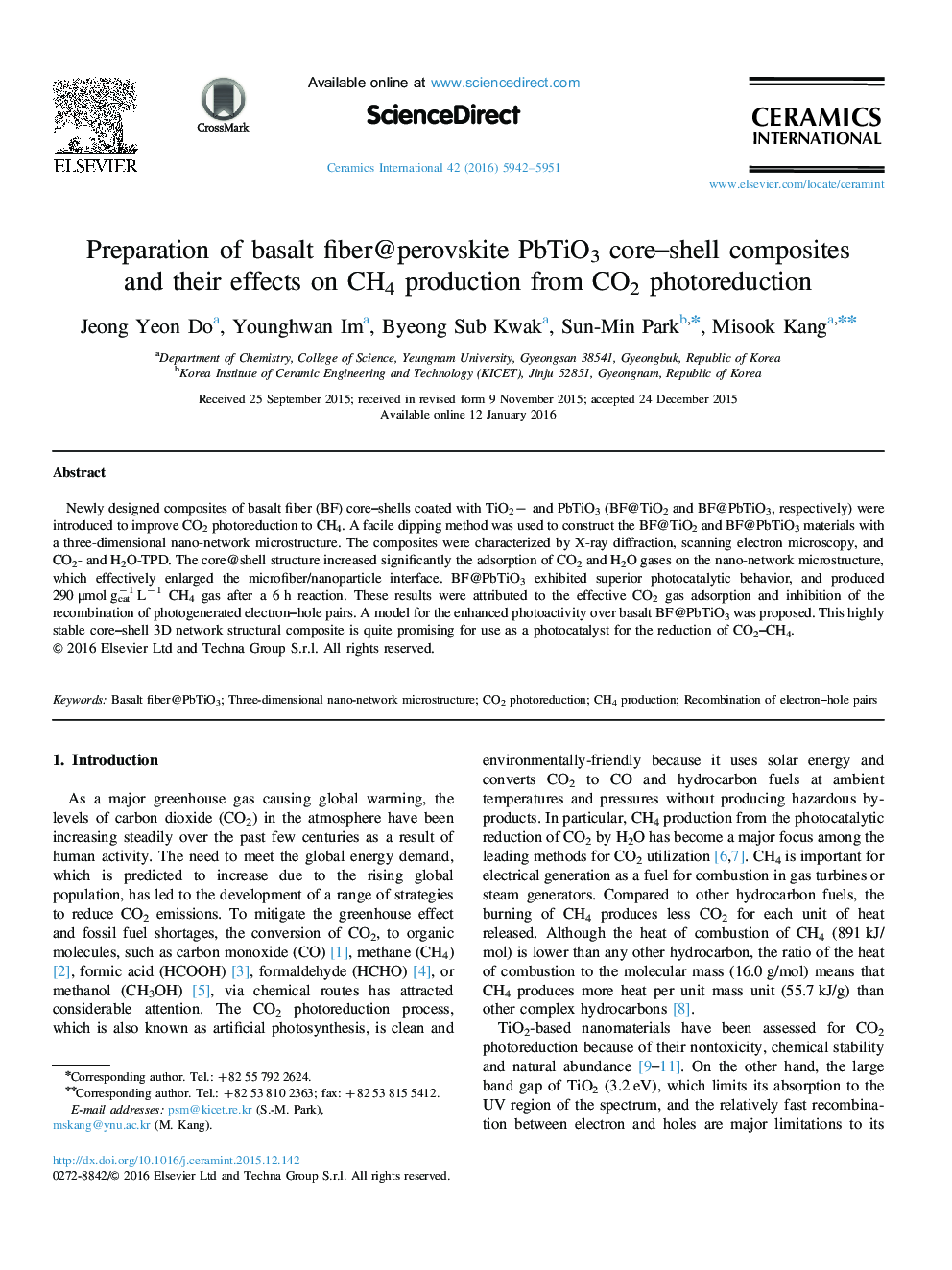| Article ID | Journal | Published Year | Pages | File Type |
|---|---|---|---|---|
| 10623963 | Ceramics International | 2016 | 10 Pages |
Abstract
Newly designed composites of basalt fiber (BF) core-shells coated with TiO2â and PbTiO3 (BF@TiO2 and BF@PbTiO3, respectively) were introduced to improve CO2 photoreduction to CH4. A facile dipping method was used to construct the BF@TiO2 and BF@PbTiO3 materials with a three-dimensional nano-network microstructure. The composites were characterized by X-ray diffraction, scanning electron microscopy, and CO2- and H2O-TPD. The core@shell structure increased significantly the adsorption of CO2 and H2O gases on the nano-network microstructure, which effectively enlarged the microfiber/nanoparticle interface. BF@PbTiO3 exhibited superior photocatalytic behavior, and produced 290 μmol gcatâ1 Lâ1 CH4 gas after a 6 h reaction. These results were attributed to the effective CO2 gas adsorption and inhibition of the recombination of photogenerated electron-hole pairs. A model for the enhanced photoactivity over basalt BF@PbTiO3 was proposed. This highly stable core-shell 3D network structural composite is quite promising for use as a photocatalyst for the reduction of CO2-CH4.
Keywords
Related Topics
Physical Sciences and Engineering
Materials Science
Ceramics and Composites
Authors
Jeong Yeon Do, Younghwan Im, Byeong Sub Kwak, Sun-Min Park, Misook Kang,
